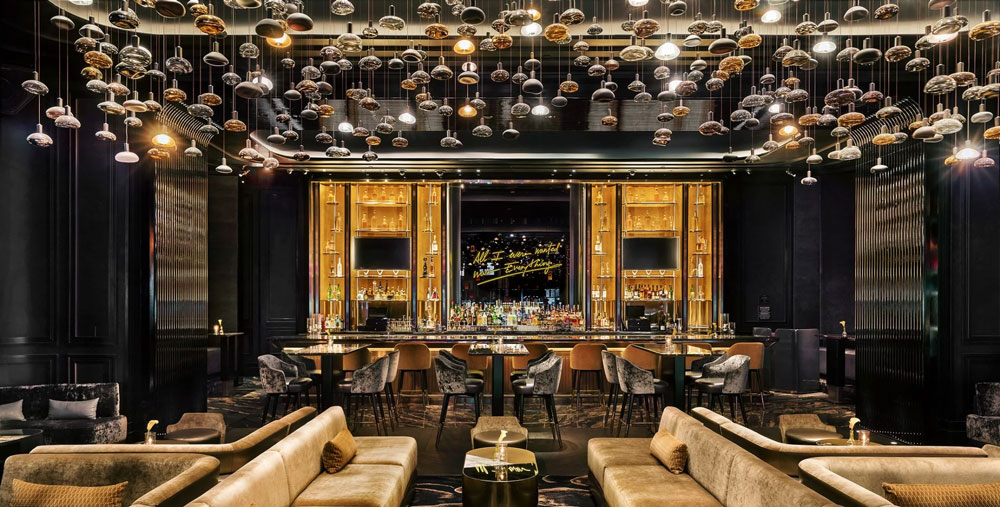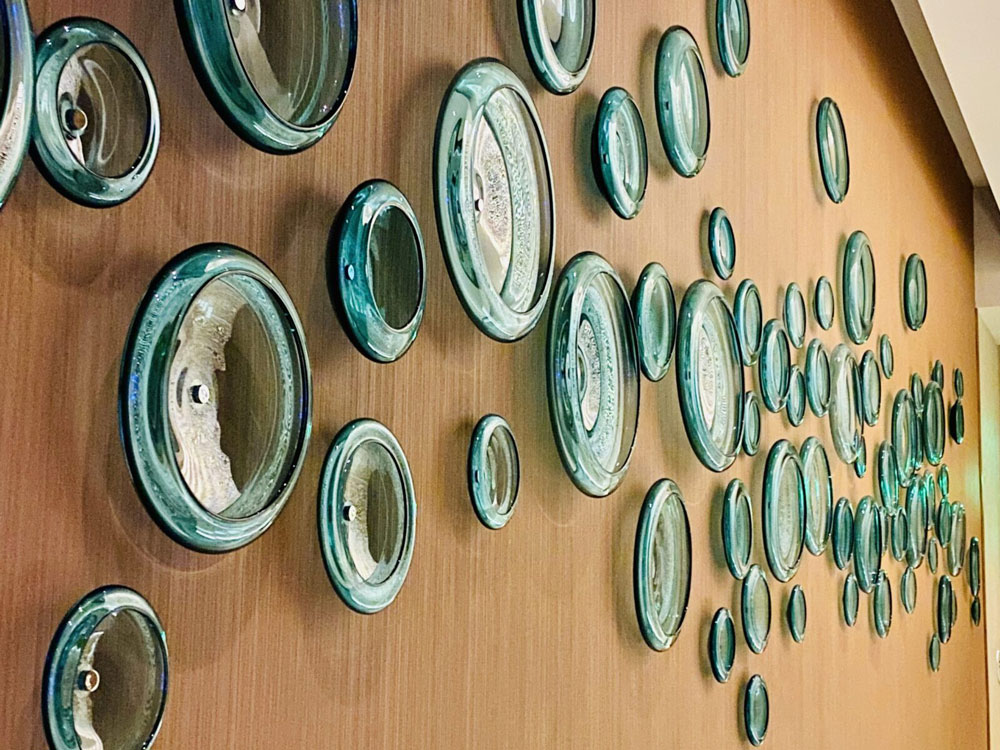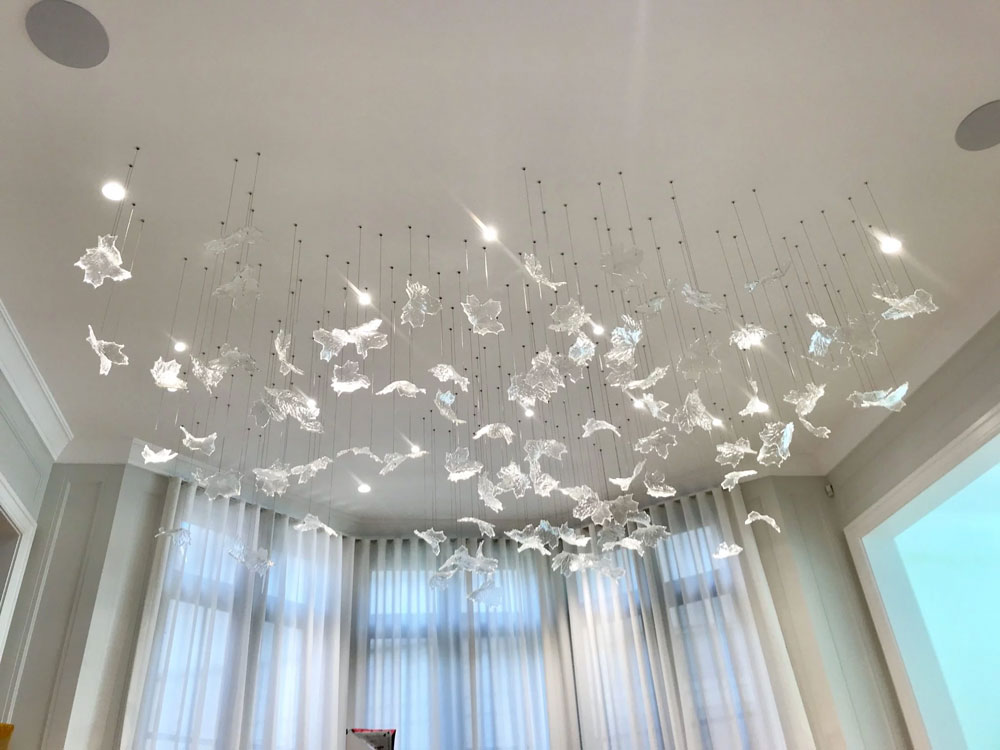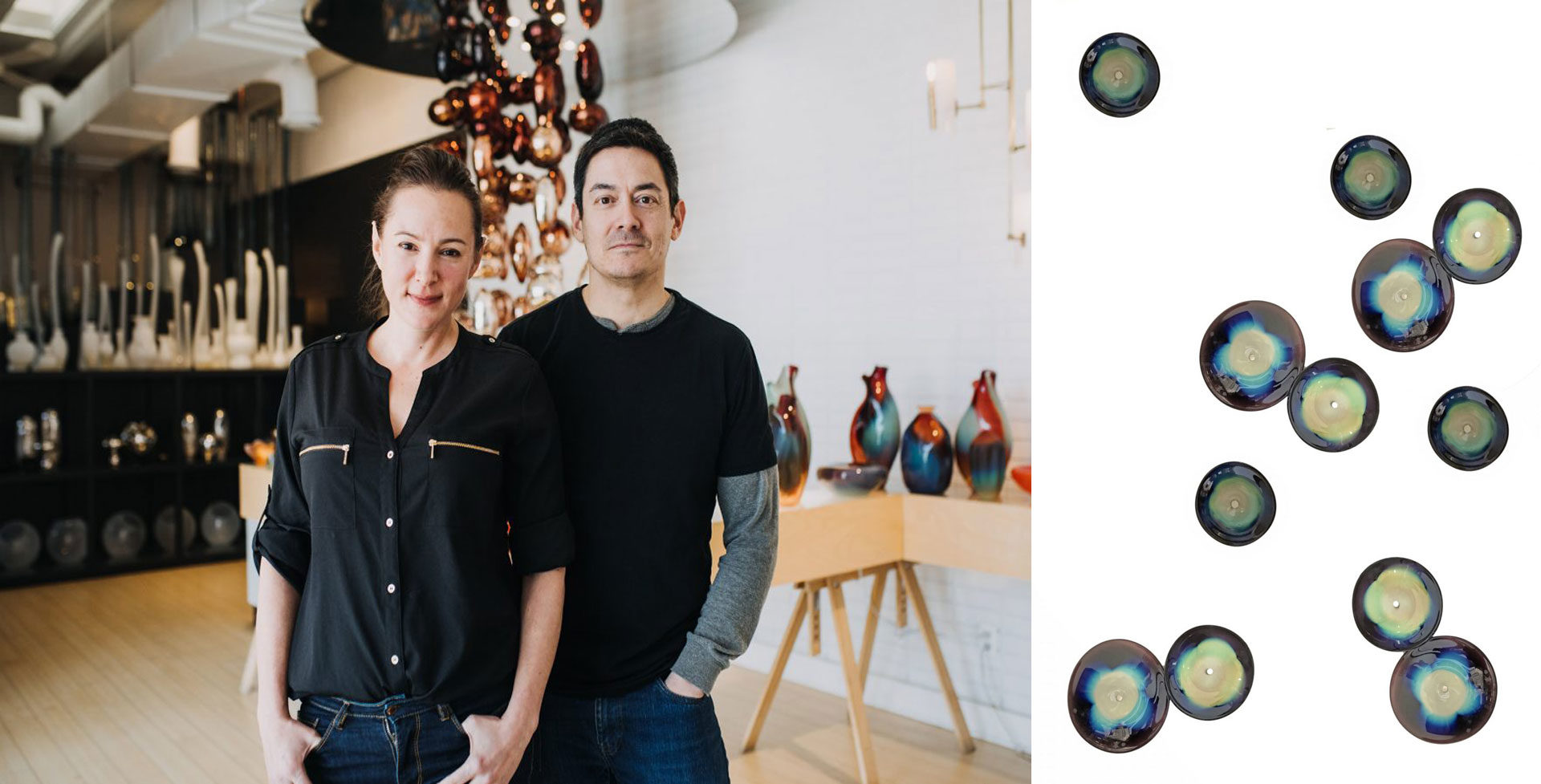Founded by husband-and-wife team Kris Gene and Eva Milinkovic in 2004, Soffi began as the decorative glass firm Tsunami Glassworks, with the aim at delivering to the world’s best interior designers and architects, unique, luxurious, contemporary glass sculpture and décor.
Taking the extensive experience in metal and glass design fabrication, Soffi was born to provide their clientele with spectacular, bespoke artwork and design solutions in metal, glass and lighting. Located in Windsor, Onatrio, Soffi’s dedicated design and fabrication team work with interior designers and art consultants from around the world; creating sculpture and décor for commercial, hospitality and residential projects.

How did you and your husband find your way to glassblowing?
Growing up, I wanted to either be an astronaut or a glassblower—weird, but true! I studied photography and then I worked doing commercial photography. But there’s something different about creating something from nothing. That’s where I switched gears and went to Sheridan College to learn glass work. I was in a show at a Montreal gallery and Chris was there with his brother, who was also in the glass program. We hit it off and then he showed up at school and that was it! That was 20 years ago.
We moved to Windsor, got married, and opened the shop kind of within a few years of meeting each other. We always knew that you can’t really do it as a hobby. We both had a strong interest in design, so we started to target more design firms.
I wouldn’t call myself an artist, but it’s definitely creative. I mean, it’s a sculpture. There’s a concept to everything, and it might go in a restaurant where many people can enjoy it. I think it’s important to be around beautiful things and it makes such a difference in cities that have public art everywhere. It’s so important that it’s not just cookie cutter. It enriches your life. Sometimes I have to justify to myself why I love doing it, but this is important. It’s also really fun and more people see it in different venues.
With glass, it’s not something you can just set up in your house. You need all this equipment and special zoning and this building, so that was part of our reasoning for moving to Windsor.
A few years ago, we started getting a lot of requests for lighting. so we made parts for lighting companies also. It’s been a natural progression for us and now we have our UL listing, so we have the ability to make lighting proper and engineered correctly instead of just sculpture with a light.
When it comes to lighting, how much does the process change compared to wall sculptures?
I think the nice thing is that the whole package works together; those pieces on the wall are the same cell design, they’re just smaller or larger scales. That shape is something we’ve made forever. I designed those as a resident when we lived in Toronto. I still like the shape! It’s kind of weird to be making something for this long, but it’s evolved, too, and has become a complementary design element for us.

I wanted to ask about your inspiration because the cells are so recognizably yours. How did you come up with that?
I love the wall. I love the canvas of the wall and the fact that you can put multiple shapes on it. It’s so versatile. You can make so many different designs for the projects that they will look very unique for the job. It’s original for that space, which I kind of think is cool, you know? Somebody else is not going to have exactly the same thing, even with the same shape.
The guys aren’t allowed to blow that one—that’s mine. So the cell is the vegetables, a heart, and the cell is the shape of a blood cell platelet. It’s inspired by biology or just kind of looking to nature for inspiration.
What we do with the glasses is manipulate the form. I’m not trying to force it into a shape that it’s not. When it’s hot, it’s liquid. It doesn’t, it’s raw. It doesn’t do hard angles. The diamonds are the only one that we flow into a mold. These organic forms are interesting to me because you’re not really doing too much to the material. You’re using a little bit of heat and some shaping and some color but you’re kind of letting it do its own thing.
It’s not fussy and that’s our style. It is what it is. We’re letting the material or the colors in the glass be naturally beautiful. There’s also a little bit of a mystery for me, because they’re made from metallic metal oxides that are melted in with the glass and that’s what makes the color, which I think is just really bizarre. That’s what colors glass. it isn’t straight paint out of a tube. It’s, this blue mixed with this blue makes this aqua color. we’ve got these color combinations that we sort of try to make it look more juicy.
Not many people have the opportunity to blow glass. What does the experience of blowing glass feel?
It’s such a weird thing to describe because it’s a really physical art form. It’s very much a sport. It’s very physically demanding, especially with the heat, but the pieces are also large and heavy and you can’t put it down. It’s not ceramics where you can turn something on a wheel and take a break. We generally work in teams, so there’s a lot of communication that happens without us even really talking to each other. We all kind of know what we’re doing and where we are and what has to happen next, so it’s kind of meditative that way.
I love everything about it. I love the fact that it’s moving, it’s hot, it’s kind of dangerous. But it’s also beautiful. You can’t really see what it is until the next day because it has to cool down overnight. It’s opening a present every day.

No kidding. How big is your team now and where do you find fellow glassblowers?
It’s really difficult. We’re a small, but mighty team of five. Chris and I talk all the time about the fact that production blowers are kind of a losing trade. I think people do appreciate the handmade nature of it, but it is so costly to start up. You need either a rich uncle or some good luck or something like we built.
I read that during COVID, you and the team transitioned to creating face shields for frontline workers, which is really neat. Why was that important to help with?
There was a need for face masks in our area and we felt compelled to do something. We figured, if we can make a big chandelier, we can figure out how to make a face shield. Bauer, the hockey equipment manufacturer, put out a free blueprint and we followed that. However, we found it was tricky to find the right materials from suppliers because hospitals have certain standards. So, we thought maybe we could raise some money to pay for materials and then donate the shields we made. We made a GoFundMe and we ended up making 4,000 face shields. We just felt strongly that we had to do something. We’ve got this building, we have people who can make fantastic things and let’s see if we can do something for good.
